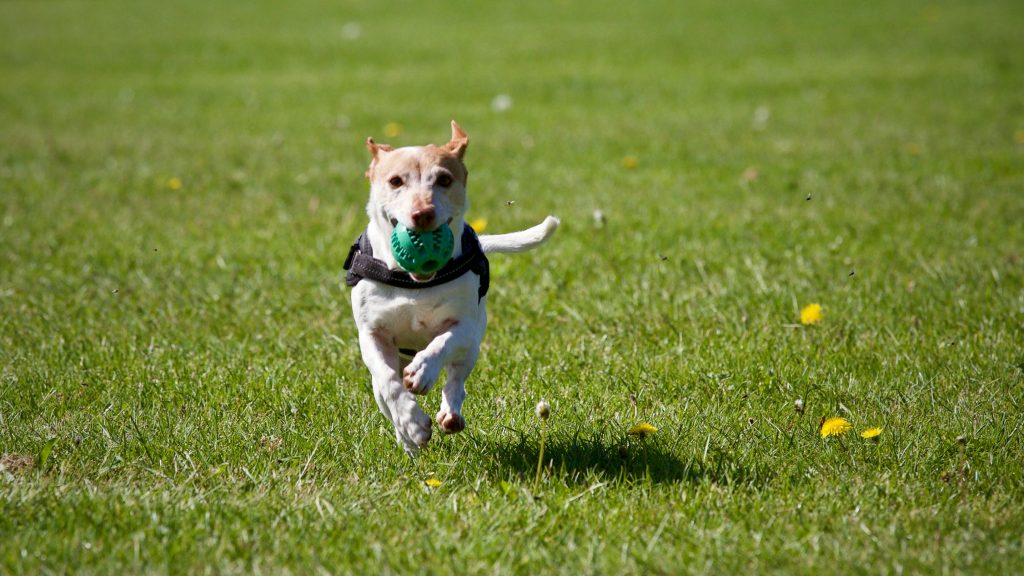Care giving involves making challenging decisions and one of them can be how to take a pet away from a dementia patient.
While having a pet can benefit a dementia patient, sometimes the patient’s capability to take care of the pet becomes insufficient.Besides the snuggles, playing fetch, and exciting walks at the park, keeping a pet may not be the best idea for dementia patients and can prove impossible.
Sometimes, circumstances may arise where the patient’s or the pet’s well-being is at risk, prompting the need for a thoughtful and considerate approach to relocate the pet.
This guide recognizes the impact the decision to relocate a pet can have on a dementia patient and offers practicle insight on how to achieve the delicate balance when taking away a pet from a dementia patient.
How Does Having a Pet Help Dementia Patients?

Dementia patients benefit from having a pet. Pets provide the needed support for dementia patients in the following ways:
Physical Exercise
Dementia patients need regular exercise for their physical well-being. Pets help dementia patients remain active through play, walks, and pet care.
For example, having a dog requires routine walks, playing fetch, and grooming, hence providing the a person with dementia patient with sufficient physical exercise on a routine basis.
Companionship
Pets offer unmatched companionship to their owners. The presence of a pet can help reduce feelings of loneliness, anxiety, and depression commonly experienced by individuals with dementia.
Petting or interacting with a pet can trigger the release of feel-good hormones, such as oxytocin and serotonin. For example, a golden retriever can provider companionship and emotional support through their empathetic nature. Also, the snuggles and cuddles from pets are soothing when dementia patients experience irritability.
Improves Social Interactions
If your loved one has dementia and struggles with social interactions, having a pet can facilitate social interactions. Pets can serve as conversation starters and can help individuals with dementia engage in meaningful interactions with caregivers, family members, or others.
Also, having a pet makes an individual more approachable and displays a welcoming continence. Dementia patients can also experience ease during new interactions when taking the pet for a walk.
Pets Can Enhance Mood
Dementia patients experience moments of agitation and anger. Sometimes, it becomes hard to manage the emotions.
Interactions with pets can evoke positive emotions and improve mood. The playful and affectionate behavior of a pet can bring joy and a sense of purpose to someone with dementia, even in moments when verbal communication may be challenging.
Why Take Away Pets from Dementia Patients?
If your loved one has had their pet for a while, maybe even before dementia, you must understand that the pet is a critical part of their life. Seeing as how pets make life better for dementia patients, it is better to approach taking the pet away with empathy.

Below are some of the reasons that can lead to the consideration of taking away a pet from a dementia patient:
Safety Issues
Dementia patients experience cognitive changes as the disease progresses. They, therefore, can become aggressive and hostile towards the pet. If the patient’s behavior risks the pet’s safety or vice versa, intervening may be necessary.
For example, a dementia patient may forget to feed the pet, leading to weight loss or malnutrition. Also, the patient can unintentionally harm the pet. In instances where safety is a concern, you can consider taking away the pet from a dementia patient.
Inability to Care For the Pet
While pets do an incredible job in providing emotional support for dementia patients, they also require care and attention.
If the dementia patient can no longer meet the pet’s basic needs, such as feeding, grooming, or veterinary care, and there are no means to care for the pet, it could be in the pet’s best interest to find a more suitable living arrangement.
Health Problems
Dementia patient’s health may deteriorate to the point where they cannot adequately care for themselves. Health deterioration can also impact their ability to care for a pet. In such cases, you can consider alternative arrangements for the pet’s well-being.
For instance, you can have the pet under a new owner but have regular visits to the dementia patient. This way, the pet’s interests are prioritized while the dementia patient still gets to spend time with the pet.
Factors To Consider When Taking Away Pets from Dementia Patients
Taking away a pet from a dementia patient is a delicate decision that should be approached with sensitivity and consideration for both the individual with dementia and the well-being of the pet.

Here’s everything you should consider before taking away a pet from a dementia patient:
Patient’s Welfare
it is important to assess the dementia patient’s well being and understand the weight of taking away a pet from the patient. It is essential to recognize the patient’s attachment to the pet.
Taking away the pet can have heavy consequences on the patient’s mental health and needs the highest level of empathy.
Pet’s Welfare
The pet’s welfare is also critical to consider when deciding to take it away from the owner. Assess whether the pet receives proper care, including adequate food, water, exercise, and veterinary attention. Also, consider the impact of the patient’s condition on the pet’s safety and quality of life.
Assess Caregiver Support
We mentioned how dementia causes cognitive decline. Dementia patients experience symptoms that may hinder them from doing essential activities such as caring for themselves or their pets.
If they don’t have a caregiver to care for the pet, taking the pet away can be a viable option.
Consider Alternative Solutions
It is essential to consider all possible options before taking away the pet. Some of the choices can be finding a caregiver or family member who can assist with pet care, hiring a professional pet caregiver, or exploring local resources that help individuals with pets.
The alternative solutions provides an option for the dementia patient to still have acess to the pet while still having the essential needs of the pet met.
Make a Gradual Transition
An abrupt pet removal can be hard to proves for both the pet and the dementia patient. Hence, it is better to consider making a gradual transition.
The transition can involve slowly introducing a new caregiver or family member who can take on some pet care responsibilities to having the pet move in with the caregiver and accomodating regular visits.
How To Take Away a Pet From a Dementia Patient
When taking away a pet from a dementia patient, the goal is to ensure the well-being of the individual with dementia and the pet. Here are some steps to consider:
Evaluate the Situation
Evaluation involves assessing the reasons for taking away the pet. Is it due to safety concerns, the patient’s declining ability to care for the pet, or other factors?

It also involves understanding the impact of taking away the pet from your loved one with dementia. Understanding all these factors can help you approach the situation with empathy.
Consider a Progressive Transition
Consider doing it gradually instead of taking the pet away in one step. For instance, consider having a new caregiver for the pet and having weekly visits to the dementia patient.
A progressive transition minimizes the negative emotional impact of taking away the pet.
Provide Emotional Support
It is critical to Offer emotional support to the patient during the process. Acknowledge the importance of the pet in their life and express empathy for the difficulty of the situation.
Most importantly, explore ways to maintain a connection between the patient and the pet, such as arranging visits or providing updates.